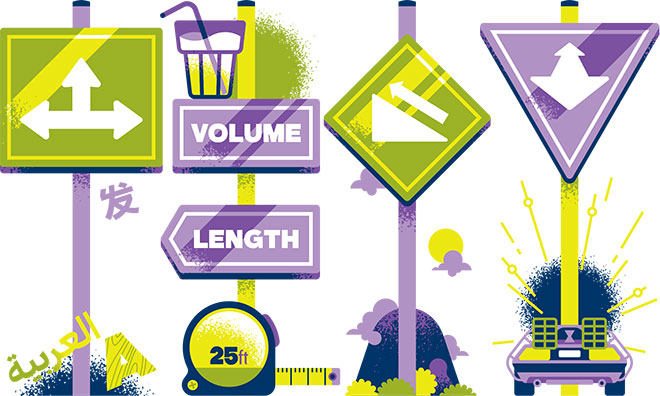

Forget the gears of a watch. those collections of cogs and springs might help us track the passing hours, but the way we visualize tempo is far more nuanced. “Time is abstract. It can’t be tall or short or big or small,” says Emanuel Bylund, a linguist at Stellenbosch University in South Africa. Time itself might be universal, but cultures worldwide use all kinds of metaphors and mannerisms to imagine the fourth dimension —and not everyone crams it into the same spatial constraints.
Write way, write time
To understand this page, you need to read from left to right. That’s how the Greeks set up their alphabet, one of the precursors to our own. But in written Arabic, words flow in the opposite direction, and in Chinese, characters run top to bottom. Researchers have found that the direction of your writing determines how you orient the arrow of time. When asked to organize events in a line from earliest to latest, English readers arranged them left to right, Arabic right to left, and Chinese top to bottom. People without writing systems, like Papua New Guinea’s Yupno, had a free-form approach.
Clock half-full
Swedish days are “long,” but Spanish ones can be “full.” These metaphors help us see time, but they can also mess with our heads a little. In one experiment, people watched a short line grow on a screen for three seconds, followed by a longer line over the same duration. The lengthier line tricked Swedish subjects into thinking extra time had elapsed. The same thing happened when Spanish-speakers watched a cylinder fill up: To them, a fuller cylinder meant more time had passed. They had no trouble with the line experiment, and vice versa for the Swedes. Words really do matter.
It’s all uphill from here
Location isn’t just a buzzword for real estate agents; terrain can contour speech. Papua New Guinea’s hilly landscape has helped shape the indigenous Yupno people’s perception of time. To them, the future is uphill and the past down. Cognitive scientist Rafael Núñez from the University of California, San Diego says that, while rare today, other geography-based time systems may have existed once, based on features like plains or waterways. But migration to different lands—and landscapes—likely erased their usefulness. “Perhaps this is not a system that travels well,” Núñez says.
Your future is behind you
Time seems to come at us head-on: the future in front, the past behind. Not so for the Aymara people of the Andes. Because the past is what they have experienced, it lies ahead, where they can see it. The future remains hidden, so it is behind them. That’s because visual evidence is particularly important to the Aymara. Their grammar, for instance, indicates whether you personally saw Joe go to the store (-vna), or learned he was going there (-tayna). You’d also use -tayna if you saw Joe leaving while you were drunk, so your eyesight can’t be trusted. This emphasis on vision frames their view of time.
This article was originally published in the September/October 2017 Mysteries of Time and Space issue of Popular Science.
